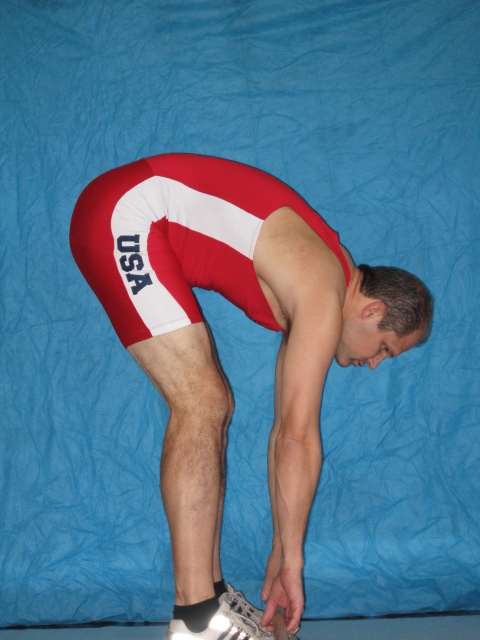USRowing Spotlight: Bob Kaehler
January 28, 2009
Back in His Element :
Three-time Olympian and four-time world champion Bob Kaehler evaluates client Yasemin Watkins at Transcend Sports Facility in Wrightstown, Pa.
Kaehler’s structural evaluation testing protocol allows him to identify individual musculoskeletal imbalances and assess strength and flexibility of the upper and lower extremities in relationship to the trunk. This evaluation system is the keystone to helping his clients reach ideal body balance and increase the level of performance while reducing the risk of athletic injury during training, racing, and life.
Click here to view a video clip of Kaehler’s structural evaluation at Transcend Sports Facility.
Probiotics 'help prevent coughs and colds in athletes' – guardian.co.uk
January 21, 2009
|
Probiotics ‘help prevent coughs and colds in athletes’
guardian.co.uk, UK – 6 hours ago The study looked at elite endurance athletes, such as marathon runners. Hard physical training weakens the immune system and makes people more likely to get … |
Hamstrings: Stretching, Flexibility and Strength
January 20, 2009
See Below
Improving your Hamstring Flexibility
January 2, 2011
By Bob Kaehler MSPT,CSCS
Have you ever complained that your hamstrings always feel tight? No matter how much you stretch your hamstrings, they never seem to become more flexible?
Flexibility is a key factor in allowing you to get into the best body position at the catch, and in achieving a long, strong, and powerful rowing stroke. Tight hamstrings limit your ability to achieve this ideal body position. Static and dynamic stretching are two effective methods used to improve your flexibility. Long term changes to flexibility require consistent effort. The hamstrings are no exception.
Static stretching has long been used as a way to increase flexibility in muscles, and improve range of motion in joints. This type of stretching is done without movement (i.e. you remain still). The force or pressure is applied to the area being stretched by an outside force, such as a wall, strap or another person.
Studies have shown that the biggest improvements in ranges of motion occur when the end range stretch position is held for longer periods of time (10+ seconds, o r longer). The stretch position should be repeated multiple times (5-10) for greater results. For athletes looking to actually get a permanent change in their flexibility, consistency becomes a key factor. Stretching should be done every day, and if possible, several times a day for even greater results.
Recent studies also confirm that static stretching does reduce your explosive strength immediately following the stretching period (up to an hour or so). Therefore this method is best used after training sessions, not before. A simple, yet effective, method of statically stretching hamstrings involves using a door frame. Simply lie on your back next to doorway with your feet facing the opening. Slide the non-stretching leg through the doorway, then place the stretch side foot up onto the molding. Extend the knee joint of the leg being stretched so it becomes straight. You will probably need to adjust the distance of your hips from the wall to get the proper stretch tension. Ensure your tail bone does not come off the floor once you are in the appropriate stretch position.
Another approach to stretching is dynamic. Dynamic stretching is an active method where you provide the energy (i.e. you move) to produce the desired stretch. Ensure, however, that you do not exceed your normal end range for the movement otherwise it becomes a ballistic stretch. Dynamic stretches usually mimic the same sporting form that you are about to perform. To produce a good hamstring stretch, simply do a quick body-over pause (1-2 second hold), whether you are on the water or on an erg. Keep your low back in a firm upright position with the spine as straight as possible. Slumping at the low back eliminates much of the stretch on the hamstrings, so be aware of your posture. You should feel a good stretch in the back of the knees (bottom of the hamstrings) when you are in the body over pause position. If you do not you either have very good hamstring mobility or you are slumping in your low back. The point of dynamic stretching is to warm-up your body before training and racing; not to force your range of motion beyond your natural limits. Practice this form of stretching on a regular basis before adding it to your regular pre-race warm-up routine.
Dynamic stretching is ideal for warming-up muscles and joints prior to training sessions and racing. Its purpose is to prepare the tissue to properly handle the stresses of the activity. Static stretching, on the other hand, is ideal for making permanent changes (i.e. increasing) range of motion, and is best done separate from training and racing sessions.
With proper technique, combining both static and dynamic stretches into your training program is an effective way to prepare for training properly, to reduce your risk of injury, and to improve your baseline flexibility.
ARTICLE 2
Hamstrings: Stretching, Flexibility and Strength
By Bob Kaehler MSPT,CSCS
Rowers and other endurance athletes are often unsure if they have optimal flexibility in their hamstrings. Also, the question of which stretches are best, and what methods are the most effective to improve hamstring mobility? Good hamstring range of motion does allow for better rowing and running technique, while inflexibility in the hamstrings can lead to increased low and mid back stress. Below we will discuss two methods of stretching commonly used; static and ballistic techniques. Both methods are commonly used to improve musculoskeletal flexibility with endurance athletes.
The most common method used to try and improve muscle flexibility is “static” stretching. A typical static stretch is held for 10 seconds to 30 seconds once the stretch position is reached. Ballistic stretching also called “bounce” stretching, is done by bouncing in and out of the stretch position in quick succession multiple times.
Several recent studies looked at how static and/or ballistic stretching methods effected flexibility and strength. One of the studies looked at the effect of duration (hold time) of static stretching on muscle strength endurance, while the other compared flexibility and strength changes following the use of static and ballistic stretching methods.
The first study compared how the length of static stretching time effected muscle force production in the hamstring muscles. There were three groups in this study, the control group – no stretch, a 30-second hold group, and a 60-second hold group. The results of this study demonstrated that the control group and 30-second hold group had no loss in hamstring strength, while the 60-second hold group had a significant loss of strength following the stretching protocol. Strength was tested with 45 degree leg press.
The second study looked at the difference between static and ballistic stretching methods on flexibility and strength. Static holds were for 30 seconds, and were repeated several times, while the ballistic stretching was done by “bobbing’ for a 1:1 second cycles for one (1) minute. The results of the study showed that the static stretching produced a greater increase in flexibility when compared to the ballistic stretching. However strength results were significantly reduced for the static stretching group while the ballistic stretching group had no loss in strength. The conclusion of this study recommended that static stretching of 30 -seconds should not be done just prior to an athletic event or race, while ballistic stretching would be much less likely to reduce maximal strength.
Hamstring Stretching
Below are pictures of some stretching methods used to improve hamstring mobility.
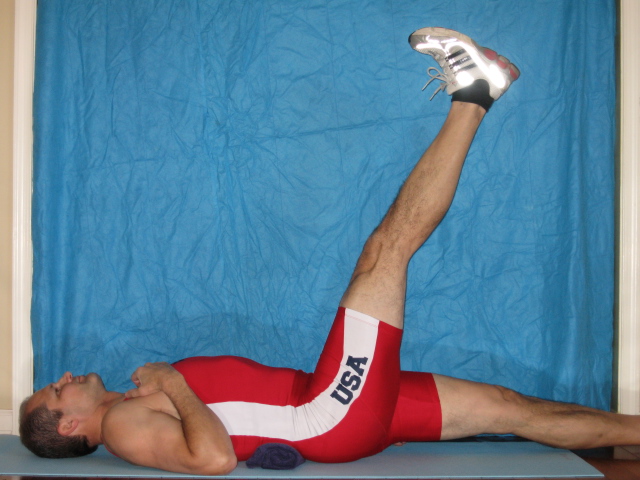
Straight leg raise position, 90 degrees (vertical) is good general range.
In order to get the body over in the rowing stroke and have the back in an ideal position one needs to have good flexibility in the hamstrings. Also, to get into a good catch position hamstring mobility is also important. Stretching the hamstrings before,during and after training can help keep this important muscle group mobile. The above picture shows a dynamic stretch to the hamstrings. Here we are using the hip flexors, abdominal muscles, and quads to stretch out the hamstrings.
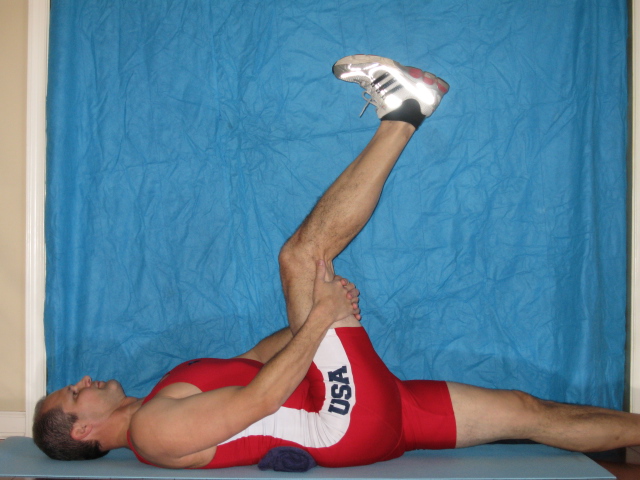
Active-static hamstring stretch
Here we use the quadriceps muscles to stretch the hamstrings. Ideal hold length is from 10 to 30 seconds. Repetitions will vary based on flexibility. Note a towel is rolled up under the low spine to eliminate low back movement when stretching the hamstrings.
Above is a typical toe touch stretch. This technique stretches both the thoracic and lumbar spine as well as the hamstrings. Those who have great spine flexibility might not get much of a stretch in the hamstrings. This method is not as effective as the straight leg dead lift position below in stretching the hamstrings.
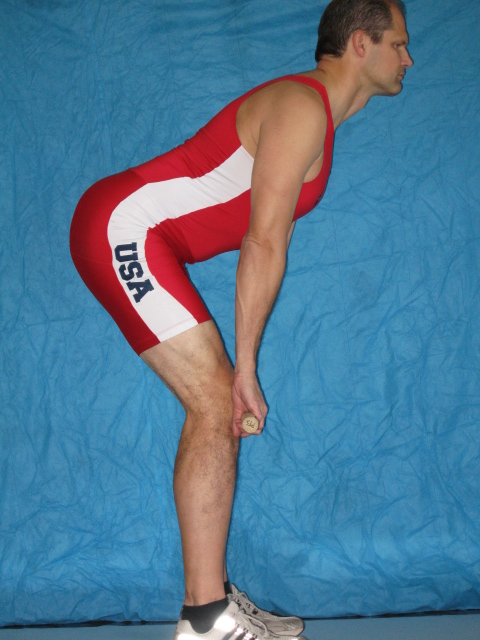
Active-static hamstring stretch
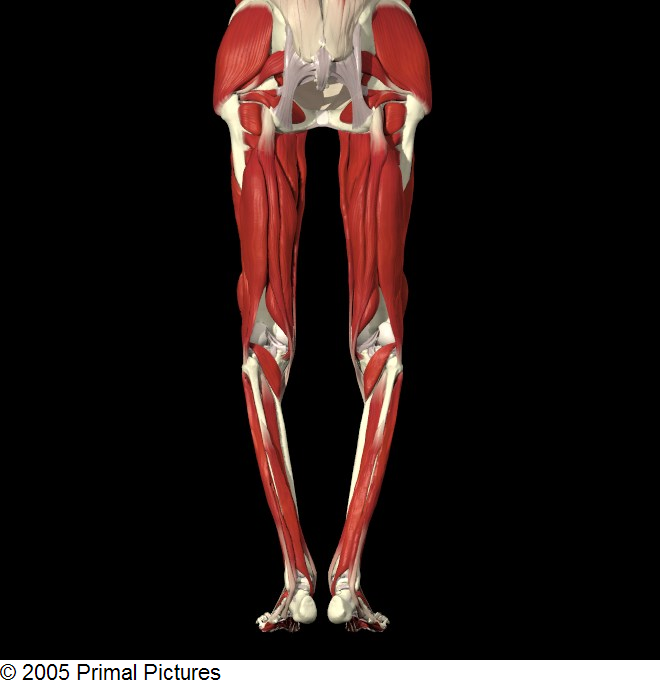
Volpenhein teams with Kaehler for Pocock Camp
January 15, 2009
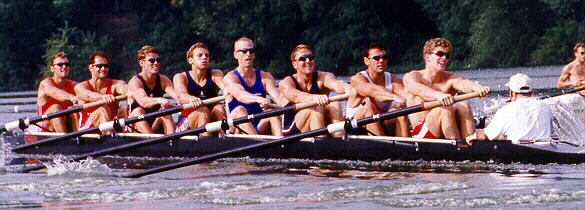
Bryan Volpenhein is a 2004 Olympic Gold medalist, 2008 Olympic bronze medalist, and a 3-time world champion (1998, 1999 and 2005).
Bryan Volpenhein trained with Bob Kaehler as part of the 2008 Men’s National Team heading into the Bejing Olympics. Volpehein stroked the mens’ 8+ to a bronze medal finish. He currently uses Kaehler’s training program together with his team of elite lightweight rowers at the Pocock Rowing Center in Seattle, WA.
Volpenhein comments on Coach Kaehler’s training program:
Bob’s a very positive person. He brings so much positivity and “can do” energy to rowing.
His background in physical therapy gives him a unique perspective (on training). He’s familiar with common injuries and understands how to prevent them. Instead of just focusing on making rowing muscles stronger, he addresses your weaknesses to prevent injuries.
With Bob’s program, the whole body becomes fatigued, and in the long run, the whole body becomes stronger. It’s a complete strength program that focuses on the entire body system. His program develops balance, coordination as well as strength.
Using Bob’s approach, I felt myself becoming fitter, better coordinated, and less prone to injuries.
It’s now the program that I use to workout with my elite lightweight rowers at Pocock.
Bryan Volpenhein – Olympic and World Champion Rower
(Bryan is the bowman in the above picture)
Koven enlists conditioning expertise
January 15, 2009
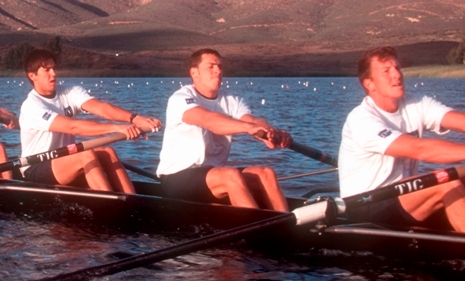
Bob is the real deal! We rowed together for years on the national team. I recently started to train for triathlons and for The Henley Royal Regatta as part of the Brown Alumni Rowing Team so I have engaged Bob to do everything. His workouts for me entail a fun and creative mix of rowing, biking, running and swimming with specialized weight workouts combined with adequate recovery time. The workouts mesh well with my work and family schedule and 6 months into it I’ve achieved results that I hadn’t seen since 2000. Bob’s nutritional guidance has also helped allow for more efficient recovery – pretty key now that I’m in my mid 30’s. There is no better investment for a “Masters’ Athlete” who wants to improve their game.
Jamie Koven – World Champion 1x, 8+
(photo: Jamie Koven, middle)
US Rowing Masters Committee Appointment
January 15, 2009
Coach Kaehler has accepted an Athlete-At-Large Representative position on the US Rowing Masters Committee for the year 2009.
The Masters Committee is comprised of nine members, including two athlete member representatives, six elected members and one at-large position appointed by the Chief Executive Officer.
The mission of the Masters Committee is to assist the Chief Executive Officer in the promotion and recreational and competitive opportunities for people over the age of 21.
Coach Kaehler is looking forward his 2009 term on this important committee. He would like to thank US Rowing for his appointment.
Kaehler Trains Ahrens for 2009 Henley Royal Regatta
January 14, 2009

Training Princeton 1999
Chris Ahrens is a 2004 Olympic Gold medalist and a four- time World Champion (1995, 1997, 1998, and 1999).
Ahrens is currently training for the 2009 Henley Royal Regatta, in Henley, England.
Ahrens comments on Coach Kaehler’s training program:
It’s great to be in shape. I like feeling strong and physically capable.
When you’re not a professional athlete though, you have to fit your training around your life. I want to be efficient and not get hurt.
I could put together a program. But I end up missing workouts, shifting things around, then straining a muscle, or going weeks without seeing improvements. That approach doesn’t move me toward my goal.
Bob tailors a program that’s sensitive to my traveling schedule and family life. He keeps things interesting by mixing up the workouts. He knows, for instance, that I hate running and like biking, so he builds that into my program.
Bob’s program is not only effective, its fun. What’s fun for me about training is improving. The workouts are definitely hard, but I see improvements. I now feel confident in my training. Therefore I’ll feel confident when I have to perform.
Chris Ahrens, – Olympic and World Champion Rower
Optimum Performance and the Use of Caffeine
January 11, 2009
Do you grab a quick caffeinated beverage before racing, or chug a caffeinated sports drink during your workout? Many athletes believe consuming a shot or two of caffeine is an ideal way to get that quick boost of energy in the quest for better performance. However the effects of caffeine on your endurance training may not be giving you the results you are looking for. Of course, many people use caffeine throughout their day to help stimulate them during daily activities and energize them during their workouts. Understanding the effects that caffeine has on a body is important in deciding whether or not to use caffeine as part of your training program.
Caffeine is actually a toxic stimulant found in nature. Although it revs the body up, it provides zero in terms of energy. After ingesting caffeine, your body automatically begins the process of metabolizing (getting rid of) it. This metabolic activity actually costs you energy and takes it from your storage of nutrients. Therefore a stimulant like caffeine triggers an abnormal “speeding up” reaction to begin eliminating it. This “speeding up” is the caffeine buzz you feel, but in actuality it is depleting your body of necessary energy and nutrients.
Not only does the process of metabolizing caffeine use up energy, it has diuretic effects (fluid loss) as the body tries to clear it from your system. This creates a negative water balance in your body, leading you to urinate more. Coupled with the elevated heart rate usually caused by caffeine, the diuretic effect could lead to over-stimulation of your body, potentially leading to dehydration in people already pushed to their physical limits. During this process of elimination we can be fooled into thinking that the stimulant is an energy value, when really it is an energy cost.
A recent article published in The Journal of Strength and Conditioning Research, titled “Caffeine and Endurance Performance”, by Matthew S. Ganio, et al., is a systematic review of 21 different studies which measured performance with a time-trial test. They looked at endurance events that were at least five (5) minutes or longer, such as cycling, running, etc. The authors of this study concluded that although the performance improvements were varied among the studies researched, they found that factors including timing, ingestion mode/vehicle, and subject habituation may have influenced study results.
One significant recommendation Ganio, et al., made from this review was that endurance athletes abstain from caffeine use at least seven (7) days before competition to maximize its ergogenic (boosting) effect. Also, it was noted by Ganio, et al. that if caffeine is used for an ergogenic effect, it should be ingested within 60 minutes or less of competition or training. The amount of caffeine commonly shown to improve endurance performance is between 3 and 6 mg. per kg-1 body mass. The caffeine benefit was equally effective when consumed with a carbohydrate solution, gum, or water alone, however coffee was noted to not to be as effective a caffeine source. When caffeine is used on a regular basis, the ergogenic effect is not as great, compared to using it sporadically or not at all.
Overall, chronic use of caffeine appears to have far less effective results in time-trial testing, and appears to cost the body energy and nutrients in elimination from the body on a daily basis. However, should an athlete decide that caffeine use is beneficial, it would make sense to follow the guidelines for amounts ingested and limit use during time trials spaced seven days or more apart, prior to race day. Determining the best use of caffeine, if any, is a personal decision best made with the advice of your physician and coach.
Before grabbing that caffeinated sports drink, consider the effects of caffeine on your body. Because of the generally negative effect that metabolizing caffeine has on a body, Coach Kaehler does not advocate the use of caffeine as a regular part of a training program. Instead, he believes that a well balanced, specially designed training and nutrition program is much more effective for achieving the maximum performance results desired on race day.
Coach Kaehler has posted this for informational purposes only, and that the use of caffeine for performance enhancement is a personal preference. It should be noted, however, that he does not recommend the use of caffeine for the clients he trains.
Reaching a Personal Best
January 10, 2009
This past year I along with the entire US Olympic Men’s Heavyweight Sweep Team worked with Bob on strength and conditioning. I found Bob’s knowledge of the sport of rowing, biomechanics, physiology and overall demeanor to be most impressive. Bob’s program helped improve my power and mechanic coordination and as a result I was able to pull a personal best on my 2k erg score this year and I did so while wearing a V02 mask. Obviously it is up to you to put in the work and fulfill your end of the bargain but in terms of teachers Bob is one of the best.
Tyler Winklevoss, Olympic Finalist 2-
Benefits of Strength Training
January 10, 2009
Transitioning indoors onto the erg has never been easier for me as it was after this past fall of rowing and your lifting program. As I mentioned in our conversation yesterday the first recognition of improvement for me came during steady state workouts. Every time I sat down on the erg, even if my legs were still sore from the previous days lift, I had confidence that I would be able to press out better splits than I had in previous years of training. The intensity of the lifts was easily identifiable, however the compressed duration of the circuit method I felt that a high level of focus on the work at hand was able to be maintained. That reality is the one that I feel provided the most impetus for physiological improvement. I always had a clear idea of the benefits of the exercises (since so many of the movements mimic rowing) without the “brain fade” realized during most lifting programs.
Truth be told I never put much stake in “cross training” or “lifting” previous to this year. I think the reason was simply that I had never been able to see results from long, slow, and often boring workouts in the weight room. But in your workouts, with the rapid progression, and the ability to really exhort yourself throughout the condensed circuits, I found a platform from where I could maintain a high heart rate, exhaust my body nearly to failure, yet be able to recover efficiently enough to train on the erg, and water at the level necessary for the US National Rowing Team.
Winter Erg scores compared to previous bests
October : 30 minute Erg Test @ 24 SPM
Average Split – 1:39.2 / 500 meters (previous best – 1:39.4)
December : 6K Erg Test Open Rating
Average Split – 1:36.1 / 500 meters, Total Time – 19:13 (previous best 19:23)
February: 2K Erg Test Open Rating
Average Split – 1:28.9 / 500 meters, Total Time – 5:55.8 (previous best 5:58.0)
Paul Daniels – Men’s 8+ World Champion , 2005

